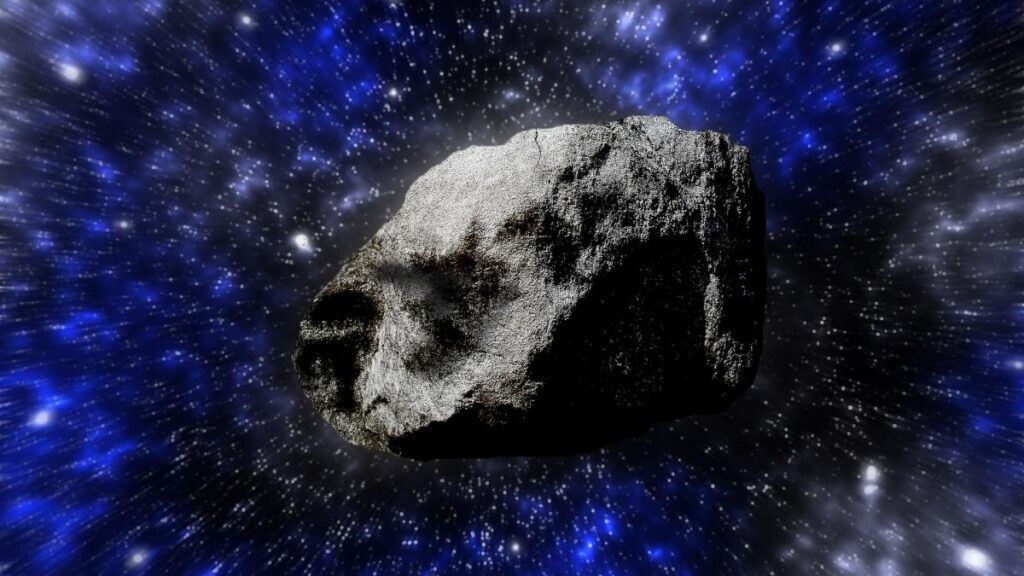In recent discussions surrounding the asteroid Apophis, a new study has revealed that its encounter with Earth in 2029 may lead to significant transformations of its surface. Apophis, named after Apep, the Egyptian god of chaos, is a 1,100-foot-long (340 meters) peanut-shaped asteroid that raises concerns due to its size, despite its projected close approach to Earth. The asteroid, discovered in 2004, was initially thought to pose a potential impact threat, but refined observations in 2021 have considerably reduced the chances of collision. Current predictions indicate that Apophis will pass within approximately 20,000 miles (32,000 kilometers) of Earth on April 13, 2029, which would place it closer than many artificial satellites, although it is expected not to have significant impacts on our planet.
Asteroid scientist Ronald-Louis Ballouz from Johns Hopkins University has taken a keen interest in understanding how Apophis itself will be affected by this close encounter. He explains that asteroids are constantly bombarded by tiny meteoroids, a phenomenon known as space weathering. Notably, many asteroids observed near larger planets lack evidence of weathering, prompting interest in the mechanisms that may contribute to this phenomenon. Ballouz proposes that the gravitational forces exerted by planets like Earth could dislodge rocks from an asteroid’s surface, thereby uncovering fresher layers underneath. To explore this hypothesis, Ballouz and his team created computational models of Apophis, leveraging data from a better-studied asteroid, Itokawa.
The research team’s simulations predict that Apophis will undergo two main physical changes due to Earth’s gravitational influences during the 2029 encounter. Firstly, the asteroid will likely experience tremors as it approaches, beginning approximately an hour beforehand and persisting shortly afterward. While the actual strength of these tremors is challenging to quantify, it’s noted that Apophis’s significantly weaker gravitational force compared to Earth’s means even minor disturbances could have considerable effects, potentially causing boulders to become dislodged. Most of these rocks would likely fall back onto the surface, creating distinct patterns that could be detected by a spacecraft in the vicinity.
The second process expected to influence Apophis’s surface is its tumbling behavior. Unlike a stable rotation, Apophis tumbles erratically through space, and a separate study from 2023 has revealed how Earth’s gravity will affect the speed of this tumbling. This simulation affirmed that changes in direction could lead to either an increase or decrease in rotational speed, causing instability in the slopes of surface rocks. Consequently, this could result in landslides, especially in response to gradual shifts over thousands of years following the close approach.
Ballouz’s research not only highlights the anticipated effects of the 2029 encounter on Apophis but also introduces a novel mechanism for what he refers to as “surface refreshing” on asteroids, providing insights into how planetary encounters can alter the surfaces of small celestial bodies. The significance of these findings extends to future research, with hopes that they may guide our understanding of asteroid dynamics and surface modifications. In a follow-up mission, NASA’s OSIRIS-APEX is aligned to study Apophis during this encounter; this mission will be repurposed from the OSIRIS-REx project, which previously retrieved samples from another asteroid, Bennu. Scheduled to explore Apophis for 18 months post-encounter, OSIRIS-APEX aims to analyze the asteroid’s chemical composition and detailed surface features.
This research has been documented in a study available on the arXiv preprint database and has been accepted for publication in The Planetary Science Journal. As scientists continue to refine their understanding of asteroids and their interactions with Earth, the study of Apophis offers significant insights into the dynamic processes that govern celestial bodies and provides essential knowledge for planetary defense strategies moving forward.

